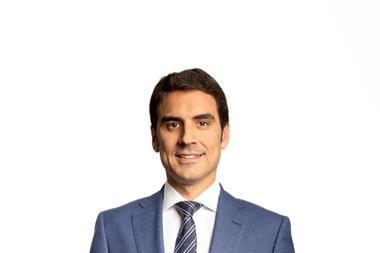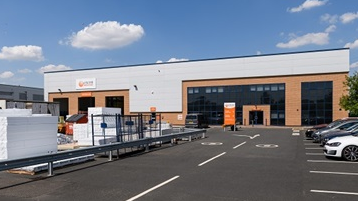In difficult times there is usually no shortage of predatory funds waiting to snap up a distress sell or to spot a niche opportunity. But with liquidity all but dried up, Mark Faithfull asks: is there anyone lending?
On the face of it, late 2008 or early 2009 could hardly be a better time to pounce on the right real estate deal. Property may have been one of the first asset classes to have taken a pricing hit on the global markets but the severity with which equities have subsequently been devastated and the shaking of the very foundations of the financial markets have started to make real estate look a much more tangible place to invest again.
But such has been the depth of the malaise in the market that raising the funding required to make a swoop for value has become increasingly tough, to the point where some believe that lack of liquidity may stall the opportunity funds. Indeed, less than $400bn of property transactions worldwide will be completed this year, according to the latest estimates from agent Jones Lang LaSalle (JLL).
The agent's Global Capital Flows report, released at Expo Real in Munich in early October, predicted that transactional figures for 2008 will reach only half of the $759bn (€566bn) of property that was sold last year. And JLL points to cash rather than leveraged buyers as the most active.
"Overall 2008 volumes in Europe are likely to be around 50% off last year's total of $333bn, with most transactions being primarily equity funded," adds Tony Horrell, JLL's head of European capital markets. "While an increasing number of opportunity funds have been launched, purchases will predominantly be equity driven. While debt is available for smaller, higher quality deals, demand-led transaction volumes are likely to remain relatively low."
According to JLL, the Gulf states continue to be the major purchasers of global real estate - this year, they are expected to invest more than $7.6bn - but even they are finding it difficult to locate opportunities.
One of the reasons is that fund managers are doing all they can to extend the lives of their European non-listed property funds rather than sell assets into a falling market, according to a survey by the European Association for Investors in Non-listed Real Estate Vehicles (INREV).
Of the funds due to terminate between 2008 and 2010, 29% are planning to liquidate compared with 52% in 2007, according to INREV's Fund Termination study for 2008. In comparison, 59% of fund managers are planning to continue the life of their funds. Of this 59%, over three quarters are planning to extend the fund and 22% are planning to roll over the vehicle into a new structure.
"The results show that fund managers are considering a range of termination options to work towards the best exit for their funds," says INREV research director Andrea Carpenter. "Currently, the flexibility of a one-to-two year extension is attractive from a timing standpoint as it delays the need to decide whether to sell assets into a market where capital values are falling," she says.
The value of deals is also dropping as debt becomes harder to find. Nick Axford, head of EMEA research and consulting at CBRE, notes that the number of deals of over €200m fell from 115 in the first half of 2007 to 43 in the first half of 2008. By percentage of total deals they also dropped from over 40% to a little more than one quarter.
Nor does Axford see opportunistic funds as playing a significantly higher profile role. His estimate of what he calls the "wall of equity" for real estate is that as much as €247bn could be sitting on the sidelines.
However, just €30bn of this is from recovery funds, with traditional investment funds dominating, while German open-ended funds and sovereign wealth funds make up the rest. "Significant stress in the financial markets is going to find its way into the property markets," he reflects. "Investors still need a clearer signal on pricing."
However, despite the uncertainty and drying up of credit lines, alternative lenders are entering the market. A notable example is GE Real Estate, which in less than a year has spent more than €4.6bn on loan portfolios in the UK and Europe, and is buying only debt until the property market recovers.
Its largest single purchase to date was a €2.9bn portfolio from Bradford & Bingley last November, and its most recent in July of this year was the acquisition of a €642m portfolio of a piece and whole loans in a performing pan-European loan book from Credit Suisse. The diversified portfolio comprises 10 loans spread across a range of asset classes, located in Germany, Switzerland, the UK and Spain.
Michael Rowan, managing director of GE Real Estate UK, said of the deals: "The successful acquisition of our third loan portfolio demonstrates the value we see in this type of transaction."
Other key players include Carlyle Group, which purchased a $1bn portfolio from Credit Suisse in May, and Blackrock, which bought a €9.6bn portfolio from UBS in the same month and is increasingly turning its attentions to central and eastern Europe.
In addition, Morgan Stanley estimates that around €25bn of commercial property loans need to be refinanced by the end of the year. Borrowers are being asked to inject more equity to avoid loan-to-value covenant breaches. In many cases this will not be possible, and banks will end up with even more bad debts.
It is also feasible to use debt from the seller, as banks may take the view that they are exchanging bad debt for good. Given that direct property investment is difficult at the moment, the property debt business can look very attractive, especially if the loan is to a good covenant with strong underlying assets.
"Established managers are attracting money," adds Noel Manns, principal at European property fund manager Europa Capital. "I think the real problem in raising money is for the new managers - at the moment for them establishing a new fund is almost like venture capital."
Europa Capital has attracted €750m of equity capital commitments for two new investment funds for European property investment, giving Europa Capital spending power in excess of €2.5bn. Manns also believes that investors will begin to look more closely at the people in charge of the funds and their experience and track record, backing those with substantial real estate successes to their name.
He says that the rule-of-thumb pointers to investment are also changing. "The time it is taking to get that full investment is increasing and the days of giving a 40-day notice period to get involved in an opportunity fund are gone," he says. "The best we can do now is ask clients to put consideration of the deal to the top of their priority list."
And he also believes that the 25% equity to 75% debt equation is now more like one-third/two-thirds. "Under this new multiple one thing has to happen, prices have to drop further," he says. "And of course that is still one of the big issues - investors are very concerned that asset values are still declining."
Miles d'Arcy Irvine, chairman of Shaftesbury International Holdings, believes that with property established as a global asset class, its relative illiquidity compared with other asset classes has slowed down price adjustment, deterring investors still not satisfied the market has hit bottom. "Equity is still waiting but no-one wants to try and catch a falling sword. The best chance for real estate is that with every asset class in turmoil, good quality real estate may become the refuge for some investors."
Dine Becker, head of international investment at Catella Property Group, adds that while many of the traditional investment vehicles continue to put money into the market, research from her company suggests that for all the opportunistic funds that want to get into the market, there is just €800m available from the banks. "That is just not enough," she says. "Investors may be on the scene but volumes are way down."
Many may take the approach of LaSalle Investment Management, which plans to invest heavily in Asia's logistics and hospitality sectors, following the final equity raising for its largest-ever opportunity fund targeting the region. It believes that making key investments now could help it ultimately raise the levels of funding it feels it needs for the region.
The fund manager closed its Asia Opportunity Fund III after raising $3bn of equity for the fund, which runs for eight years, mainly from US corporate and government pension funds, although some has been raised from endowments, from European institutions and from sovereign wealth funds. With debt, this could provide LaSalle with $10-12bn to spend.
However, Ian Mackie, chief investment officer for LaSalle Investment Management in the Asia-Pacific region, admits: "In the current debt market we will struggle to reach [the targeted] level of loan to value. But we have sufficient capital to buy where we see good value, and could leverage up later."LaSalle IM expects to double its assets under management in Asia in the next three years as the fund becomes invested.
Alternatively, investors and funds may feel emboldened by the situation in the US. According to Private Equity Intelligence (PEI), which tracks real estate private equity funds, a total of 38 real estate funds reached a final close during Q2 2008, raising aggregate capital of $31.3bn, the second most successful period of all time, with only Q2 2007 experiencing greater levels.
The research showed that the average size of funds which closed during the period was $820m. Although this is a slight reduction on the average of $940m from the first quarter, it is larger than the average fund size of any quarter from 2007. This suggests that investors are increasingly looking to the more experienced managers, which are marketing larger funds, making fundraising tougher than ever for newer firms.
There are now a total of 394 real estate funds in the market, seeking a total of $222bn in aggregate commitments, says PEI. Those with funds ready to pounce on properties and mortgages include Blackstone, Westbrook, Apollo, Goldman Sachs, CB Richard Ellis Investors, Morgan Stanley Real Estate and the €2.2bn Carlyle Europe Real Estate Partners III, the largest solely Europe-focused fund ever raised.
The opportunistic vehicle is targeting a 20% gross IRR and invests in hotels, retail, office, residential and industrial properties. The majority of the fund will be invested in France and the UK.
Further investments will be made in Italy, Germany, Spain, Portugal and Scandinavia. It is also targeting eastern European markets, with Bulgaria of particular interest. Carlyle has recently made acquisitions in Dusseldorf and Salford and appointed senior management to focus on France and the Benelux.
Opportunistic funds were the most significant during Q2, accounting for the 64% of the aggregate total. Value added vehicles were the next most significant, contributing 21% of the total capital.
So early signs are that credit may begin to flow back into the opportunistic funds' coffers and perhaps just in time for the first phase of distress sales, should the property sell-off finally begin. But to really start attracting investors the big question remains: when will the sector determine that it has finally seen the bottom of the market?












